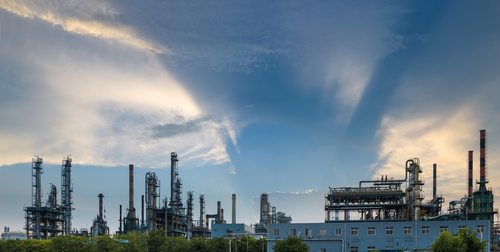Settlement Will Substantially Slash Sulfuric Acid Emissions from Fertilizer Production Plants
 |
In a recent settlement with the U.S. Environmental Protection Agency (EPA) and the Louisiana Department of Environmental Quality (LDEQ), three subsidiaries of the world’s largest fertilizer manufacturer will spend an estimated $50 million to reduce sulfuric acid (SO2) emissions at eight plants in Louisiana, Florida, and North Carolina. According to the EPA, the settlement “covers more sulfuric acid production capacity—roughly 24,000 tons per day or approximately 14 percent of total U.S. capacity—than all previous sulfuric acid settlements under this initiative combined.”
As the main pollutant emitted by SO2 plants, SO2 contributes significantly to acid rain, smog, and haze. When it combines in the atmosphere with nitrogen oxide (NOx), SO2 is converted to particulate matter and can cause adverse impacts on human health, including severe respiratory and cardiovascular problems and premature death.
According to the complaint, the three companies allegedly violated the CAA and the states’ EPA-approved state implementation plans when they constructed or modified their SO2 plants, which resulted in increased SO2 emissions. The CAA provisions allegedly violated included:
- Prevention of Significant Deterioration (PSD), which requires installation of Best Available Control Technology (BACT), an air quality analysis, an additional impacts analysis, and public involvement;
- Title V, which provides operating permits for air pollution sources, and
- New Source Performance Standards (NSPS), which are technology-based standards that apply to specific categories of stationary sources and require that facilities demonstrate compliance with the CAA at new, modified, or reconstructed facilities.
Forget expensive calls to lawyers and consultants. With Enviro.BLR.com, you get instant access, 24/7. Try it out today and get the 2015 EHS Salary Guide, absolutely free. Download Now.
Under the settlement, all three companies will “install, upgrade and operate state-of-the-art pollution reduction measures, as well as install emissions monitors at eight sulfuric acid plants across facilities in Geismar, La. (one plant), White Springs, Fla. (four plants), and Aurora, N.C. (three plants).” When complete, the EPA anticipates the new emissions controls will result in SO2 reductions estimated at more than 12,600 tons per year (tpy). The companies can also retire plants to comply with the settlement.
In addition to the SO2 controls, the settlement includes a supplemental environmental project (SEP) at the Louisiana facility, which has a co-located nitric acid plant. The SEP is part of the EPA’s ongoing commitment to environmental justice for vulnerable populations and communities and requires the installation and operation of selective catalytic reduction technology at the plant and compliance with a 0.6 pound/ton NOx limit. The SEP will reduce emissions of NOx by 60 tpy and ammonia by 430 tpy. The project will cost an estimated $2.5 million to $4 million. Together, the SO2, NOx, and ammonia emissions reductions will total 13,090 tpy.
Everything You Need for Environmental Compliance
Enviro.BLR.com puts everything you need at your fingertips, including practical RCRA, CAA, CWA, hazardous waste regulatory analysis and activity, news, and compliance tools. Try it at no cost or risk and get a FREE report.
According to the EPA, the action is the tenth settlement reached under the agency’s National Acid Manufacturing Plant Initiative and the seventh settlement that specifically addresses pollution from SO2 plants. The settlement also resolves alleged violations based on Louisiana law at the Geismar, Louisiana, facility.
In addition to the costs of the pollution emissions reduction measures, the companies will pay a $1.3 million penalty, of which the EPA will receive $950,000 and the LDEQ will receive $350,000.
